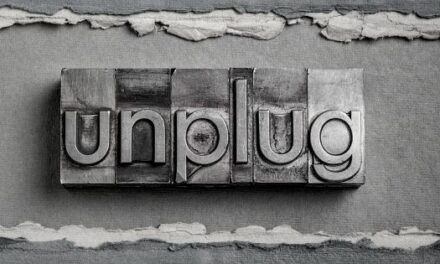I believe that to be a successful businessperson, you must be a goal setter in the written form and utilise an actual Goal Book.
By setting personal goals and creating a defined monitored roadmap for how you’ll reach your intended target, you can decide how to apply your time and resources to make actual progress in your business.

Without written visual goals, it is difficult to determine how to successfully start or run a business, get a certain job, promotion, or other milestones.
All my business goals have been driven by my personal goals.
Unfortunately, not many people in business, actually use a goal book, utilising their personal goals, to drive business success.
How many of you actually use a goal book every day?
How many of you use your personal goals, to drive you into achieving your business goals?
I believe learning to be a goal setter is one of the most important factors in your becoming a successful businessperson.
I have found a written, visual, goal book works best for me, however some of my business colleagues have used vision boards and others, used goal-setting software packages.
Goal setting is personal, and every person will utilise their goal book slightly differently from one another.
At Fastway, we developed a goal book for our franchisees to use. Because it was part of their Franchise package and we showed them how to set their personal goals in the initial training, the majority of our franchisees actually used their goal books which I believe really helped them through their business planning process because they saw the Fastway franchise was their ticket to achieving their personal goals.
Once you master the goal-setting principles and learn to channel your personal aggression, into becoming the catalyst to react to and drive your goal-setting, you should become highly motivated.
This motivation in itself will lead you to success and make you a far more efficient businessperson in tackling all the management tasks and functions that await you throughout your business career.
I believe that the first formula for success you need to master is:
A + G = M Do you know the meaning of this formula?
A (aggression) + G (goal setting) = M (motivation)
A “You have to learn to channel your personal aggression (we all have aggression of some form bottled up inside us) into making you use your goal book daily, to ensure the disciplines are in place to actually make it happen”.
+
G “Without setting achievable personal goals, it is very difficult for you to determine how to actually drive your business forward”.
=
M Motivation is the process that initiates, guides and maintains goal-oriented behaviours that enable you to drive your business to achieve your goals.
It is what causes you to actually act and achieve the necessary results. Motivation results in the ongoing momentum required to drive your business forward.
Motivation is what drives us to actually make things happen – but staying motivated isn’t always easy which is why we need to use our personal aggression to ensure we utilise our goal book correctly.
Many years ago, I attended a conference where there was an American guest speaker who spoke about and used the acronym SMART for goal setting. I liked what he had to say and have used this as a basis for my goal-setting ever since.
Goal setting is an extremely helpful way of building your business career.
By setting clear objectives in your goals, you create a clear roadmap showing you how to reach and achieve your goals, which leads you in the correct direction, showing you how to best use your time and resources required to get to the desired results.
Specific: Your goals have to attain a specific objective, not a broad
one, and must be detailed and defined. Answer the question:
“What do I want to actually accomplish? Who, what, when & where?”
Measurable: You need to be able to evaluate the success or failure of
your goal, so your goals must have some sort of objective way to measure them.
Define what evidence you need to prove you’re making progress and you may need to re-evaluate along the way.
It must answer the question: “What evidence will prove you’ve made progress toward achieving your goal?
What will the goal outcome look like when it’s complete?”
Achievable: All goals must be realistic and achievable within a certain timeframe.
Ask yourself: “Is my goal reasonable and attainable given my current circumstances?
Do I have the ability and resources necessary to achieve my goal?”
Relevant: Goals that are truly relevant to yourself are more sustainable because there’s an intrinsic motivation to fully accomplish and achieve from the personal rewards your goal will eventually allow you.
Your goals must align with your personal values and long-term objectives.
Ask yourself:
Why is the goal important to me?
How will achieving it help me?
How will it contribute towards making a better life for me?”
Timely: You must set a realistic, ambitious end date to achieve your goal.
Without an established end-date to work to there is no clear indicator to work towards.
Having an end date helps provide motivation to succeed and enables you to
measure and enjoy your success in achieving a goal.
How to set up and use your Goal Book?
- Your Goal Book can be any size of small ring-binder. I used one that was 10cm x 14cm in size. Your goal book should be divided into two basic sections. The first is your Personal Section and the latter is your Business Section.
- Each section is divided into short-term (daily & weekly), monthly and finally long term (annually)
- Your goal book should be used at the start of each workday. This should be done when you are showered, dressed and ready for work. At this time of day, you are fresh, wide awake and ready for the challenges of everyday life.
- Write down your goals in the appropriate sections. Use pictures or illustrations if applicable.
- As you achieve your goals highlight them with a highlighter.
- Remember to keep reviewing your goals daily.
- When you view your unhighlighted goals, get off your backside, and unharness your aggression to drive you to achieve the goals you have set.
- When you look at the highlighted goals, this should motivate you even further to achieve other goals and set new goals.
- Remember to only set goals that are attainable.
- At the end of every year, you should review your goals. (I suggest the Christmas/New Year holiday break). Take out all the pages, bind them with binding clips and place a cover over them showing the applicable year. When reviewing your current goal book, you should also go back through all previous goal books. This will normally motivate you into major new achievements for the new year. Ensure you carry over uncompleted goals into the new year’s Goal Book. I still have all by goal books dating back to 1970 and I get a major buzz and motivation when I flip through them each year.
- At the start of the year (just like New Year’s resolutions) you should re-set your goals for the coming year. But remember to be realistic in setting your goals.
How do I set my goals?
Let’s look at a long-term personal goal and break it down:
To purchase a large 5-bedroom home suitable to renovate in the current suburb that I live in, by the end of May.
Firstly, we find out the approximate cost of the new property. Say $1,000,000. My existing 2-bedroom property is worth $500,000 with a mortgage of $200,000 so I will have to finance $700,000. My current mortgage is $1,550 per month.
On a 15-year mortgage that would equate to approximate repayments of $4,500 per month.
Current actual living costs are $5,000pm.
That will mean that my net earnings after tax have to increase by at least $3,000 per month because my current mortgage is $1,550 per month. How am I going to achieve this?
We then transfer this goal to your business goal section.
You will then have to reevaluate your business plan to show what you need to do within 1 year to increase net profit after tax by at least $3,000 per month.
Numerous strategies will need to be evaluated and implemented to ensure you can achieve this and all your current and long-term goals.
You then need to plot this in your goal book so that you can monitor your progress toward achieving your goal. ie: Plot progress on a graph.
You will more than likely have numerous personal goals.
Short Term (say: to spend 2.5 hours at the gym per week),
Medium Term (say: to take a 2-week holiday overseas),
Long Term (say: to buy a new car or house).
Break the goals down financially and use this information to help you formulate your business plan to ensure that your business has the capabilities to ensure you can achieve your goals.





















